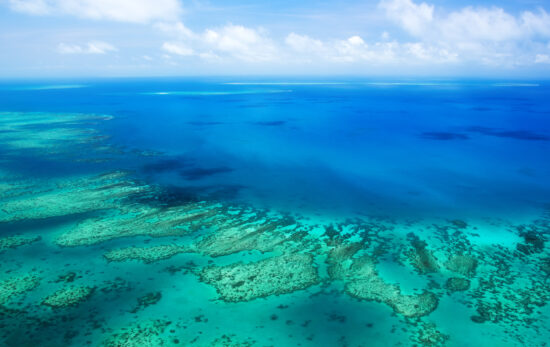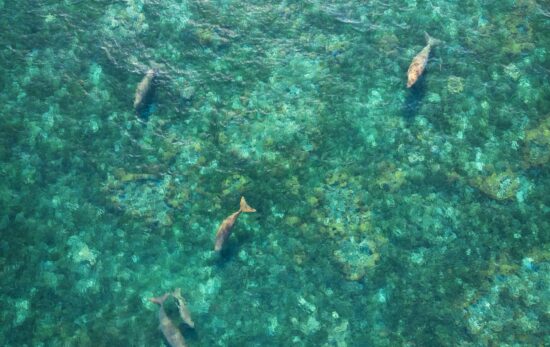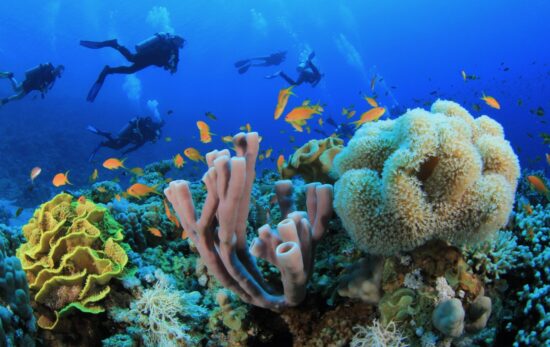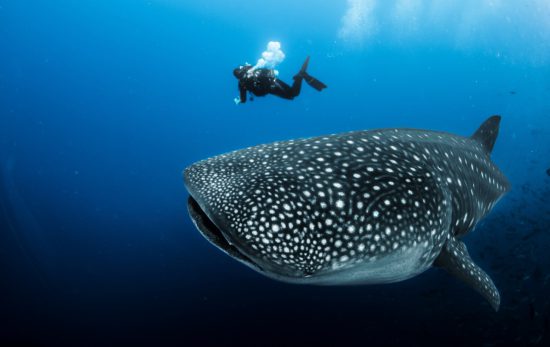Some people mistakenly think dugongs and manatees are the exact same animal with different names. Though manatees and dugongs have a lot in common, they are different animals with distinct characteristics. Both dugongs and manatees are part of the same taxonomic order, Sirena. The word “siren” means mermaid in many languages, a nod to the animals’ history of being mistaken for mermaids. At one time, there were five different types of sirena, three types of manatees (Amazonian, West African and West Indian), Steller’s sea cow, and the dugong. Sadly, Steller’s sea cow was hunted to extinction in the 1700s.
Basic Facts About Manatees
Manatees live in shallow, marshy areas in the Amazon Basin, Caribbean, Gulf of Mexico and West Africa. Unlike dugongs, who live their entire lives in saltwater, manatees can spend some or all of their time in freshwater.
Cold water can be stressful for manatees. When water temps drop below 20°C/68°F, manatees travel to warmer water, including natural springs and even power plant outflows.
On average, manatees grow to 3.6 metres/11.8 feet long and weigh 200-600 kg/440-1300 lbs. These enormous vegetarians eat plants found in shallow water such as seagrass, mangroves and sometimes algae. The Florida manatee, a subspecies of the West Indian manatee, is the largest of all sirenas and can grow up to 4 metres/13 feet long and weigh 1590 kg/3500 lbs.
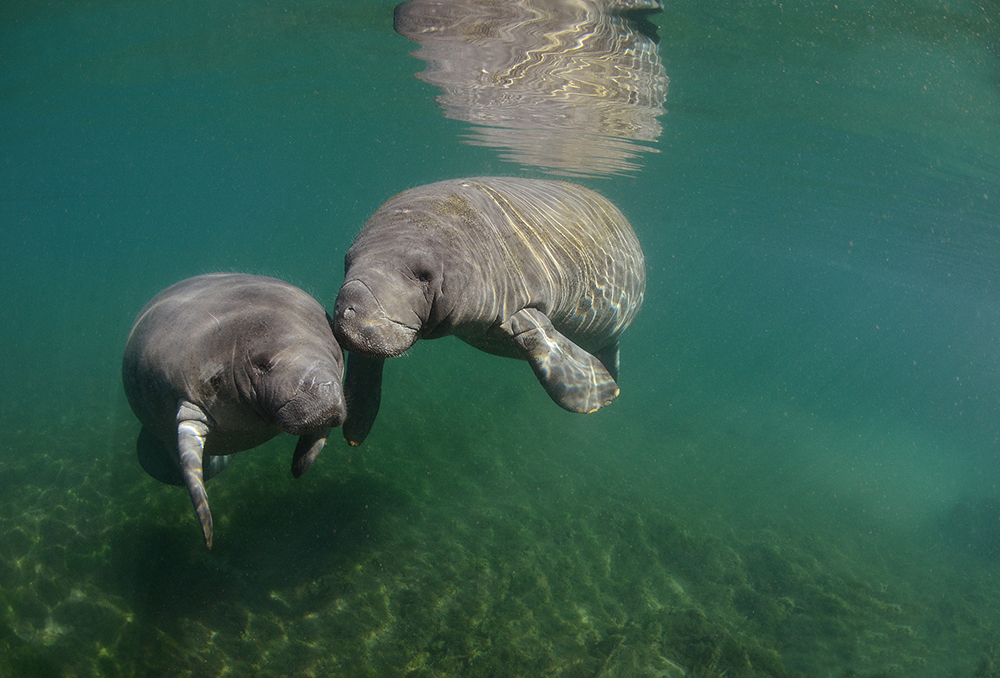
Manatee cruising speed is about 8 km/5 miles per hour, but they can swim up to 24 km/15 miles per hour for short distances. Compared to other marine animals, manatees may seem slow and docile; but, for comparison, the average top swimming speed for a human is just under 6 km/3.7 mph.
Like other marine mammals, manatees (and dugongs) must come to the surface to breathe. When resting, manatees can stay underwater for about 15 minutes. If the animal is active, it will surface every three to four minutes.
Fun fact: Even though they are marine mammals, manatees and dugongs are more closely related to elephants than dolphins or whales. Read more fun facts about manatees.
Basic Facts About Dugongs
Dugongs live in warm, shallow waters from East Africa to Australia. They can live up to 70 years old, nearly twice as long as manatees. An average dugong is 2.4-3 metres/8-10 feet long and weighs 230-500 kg/510-1000 lbs.
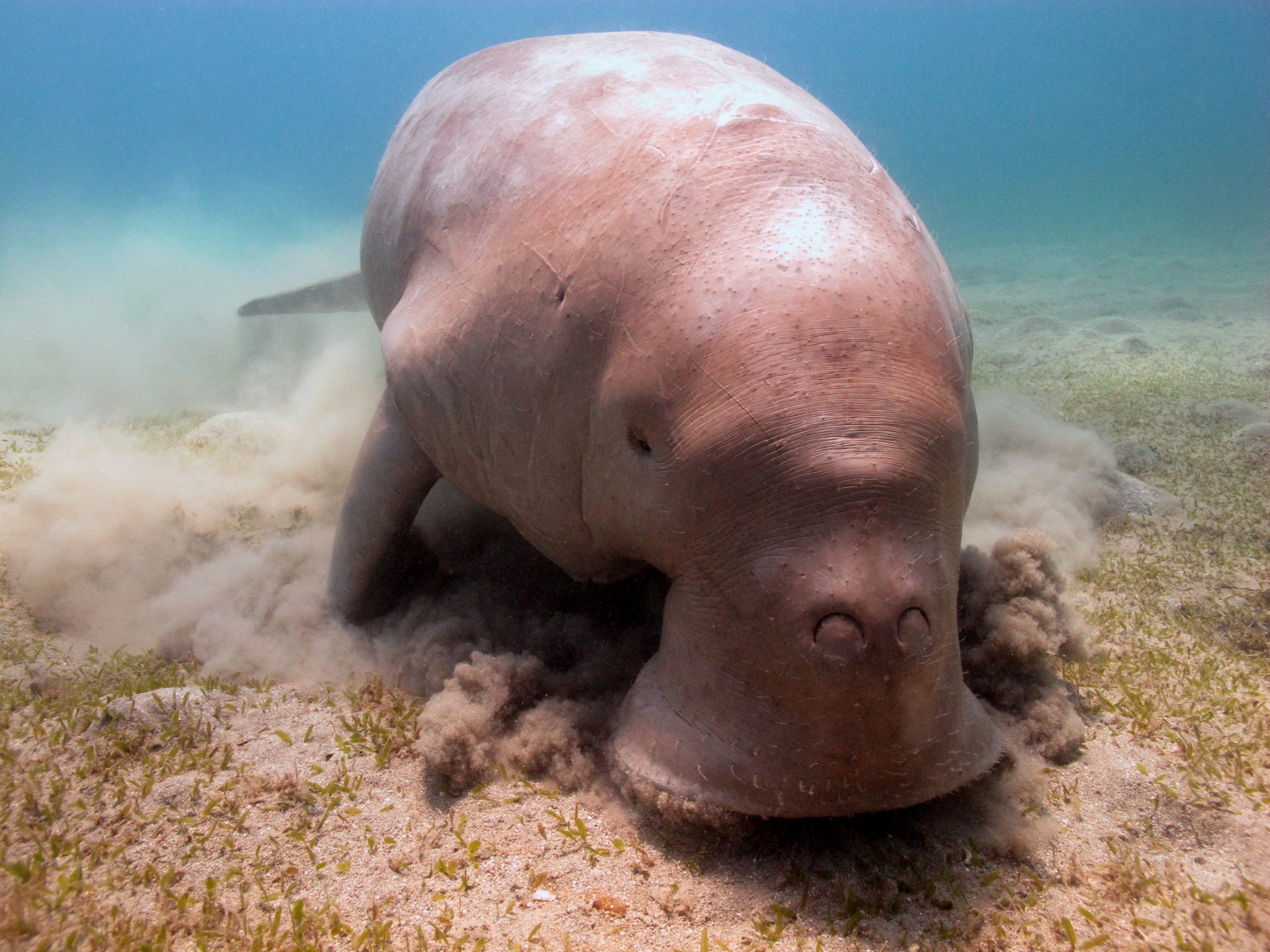
Top 3 Differences Between Manatees and Dugongs
Here are three easy ways to tell the difference between a manatee and a dugong.
#1 Mouth shape – Dugongs have a longer, trunk-like snout and agile upper lip used to munch on seagrass. If you see a photo or a video of an animal snuffling around on the bottom and hoovering up lunch, it’s probably a dugong. Manatees have a shorter snout and typically feed at or near the surface.
#2 Body size – Manatees can grow up to 4 metres/13 feet long, whereas dugongs rarely get larger than 3 metres/9.8 feet long.
#3 Tail shape – Dugong tails have flukes and look similar to whale or dolphin tales. Manatees have a paddle-shaped tail.
Fun fact: When dugongs surface to breathe, they sometimes “stand” on their tail with their head above water.
Both Dugongs and Manatees are Threatened
Sadly, human activities threaten both dugongs and manatees. Dugongs are especially vulnerable due to their long reproductive cycle. Female dugongs typically don’t give birth until they are 10-years-old and only breed every three to five years. Female manatees typically have their first baby at age three and have more babies every two to three years.
Both manatees and dugongs are protected, but they are easy prey for hunters who want their blubber and oil. The slow-moving animals are also frequently hit by boats and trapped in fishing nets or canals. Mangrove habitat destruction also threatens the gentle sirenas.

Show your support for dugongs manatees by swimming, diving or snorkeling with these gentle creatures. By spending money to see them, you signal to local governments that these animals are worth more alive than dead. Check out our list of the best places to see dugongs or manatees, and contact your local PADI Dive Shop to book.

